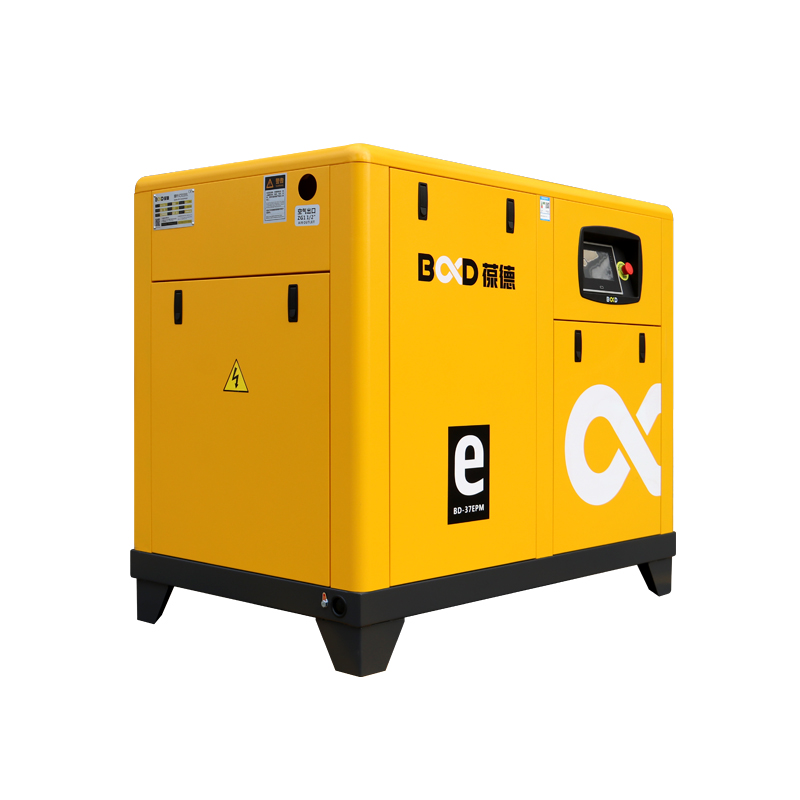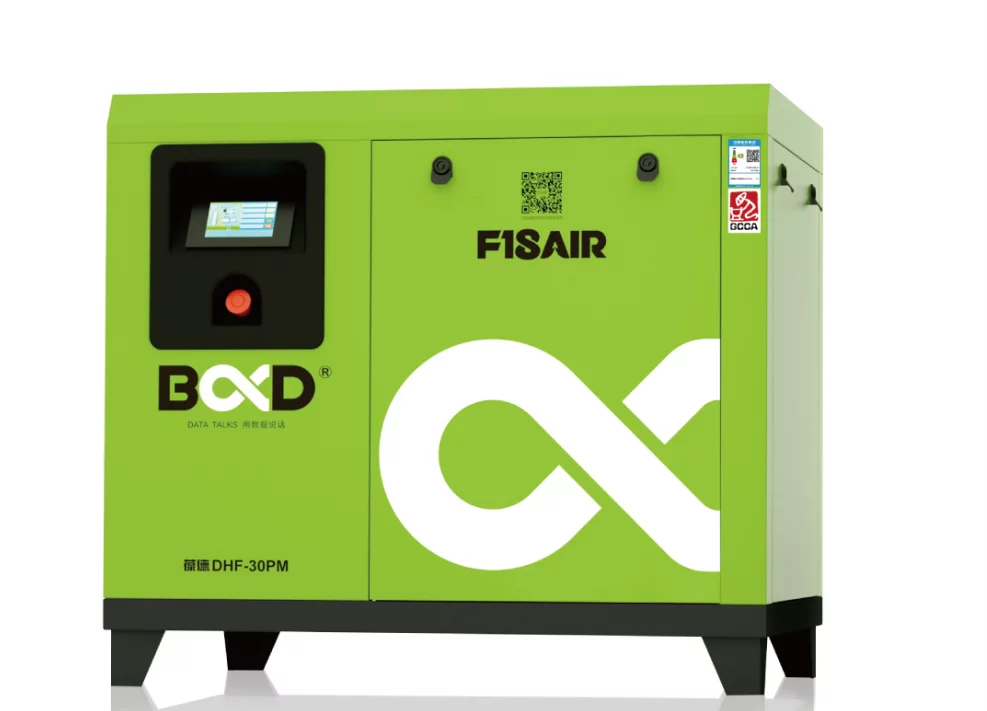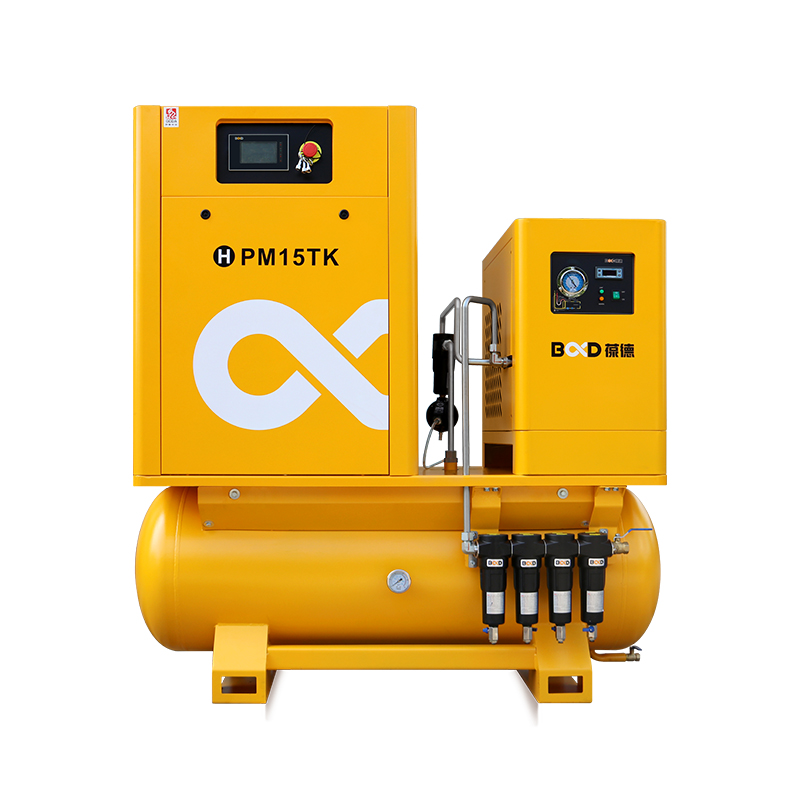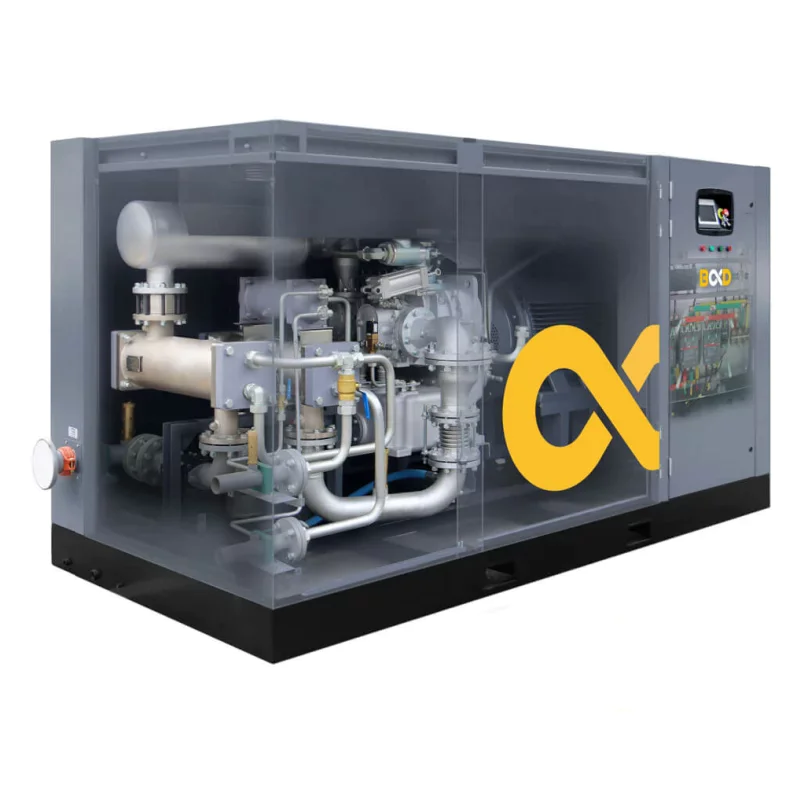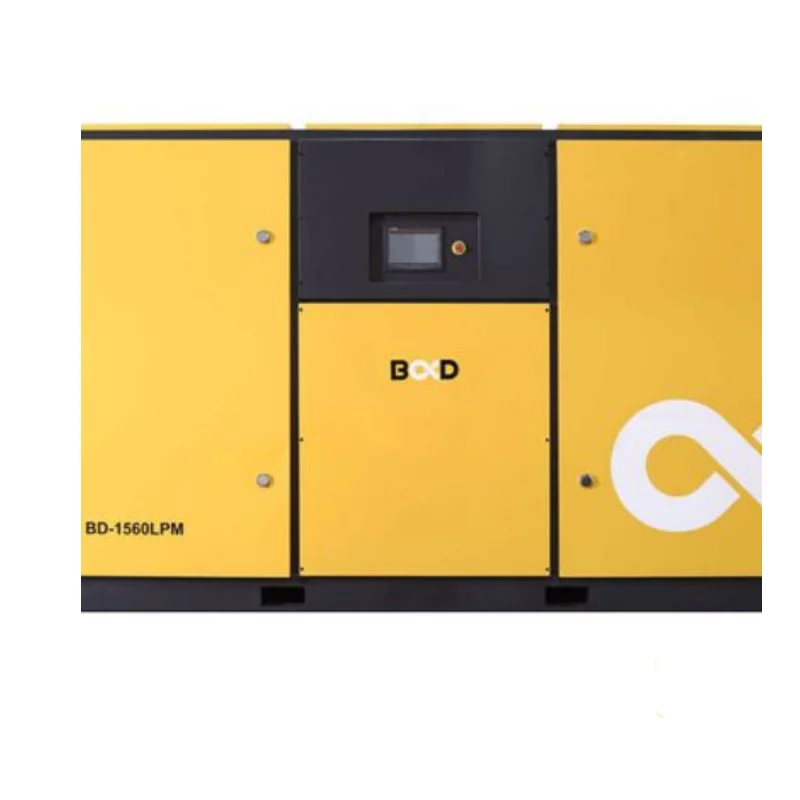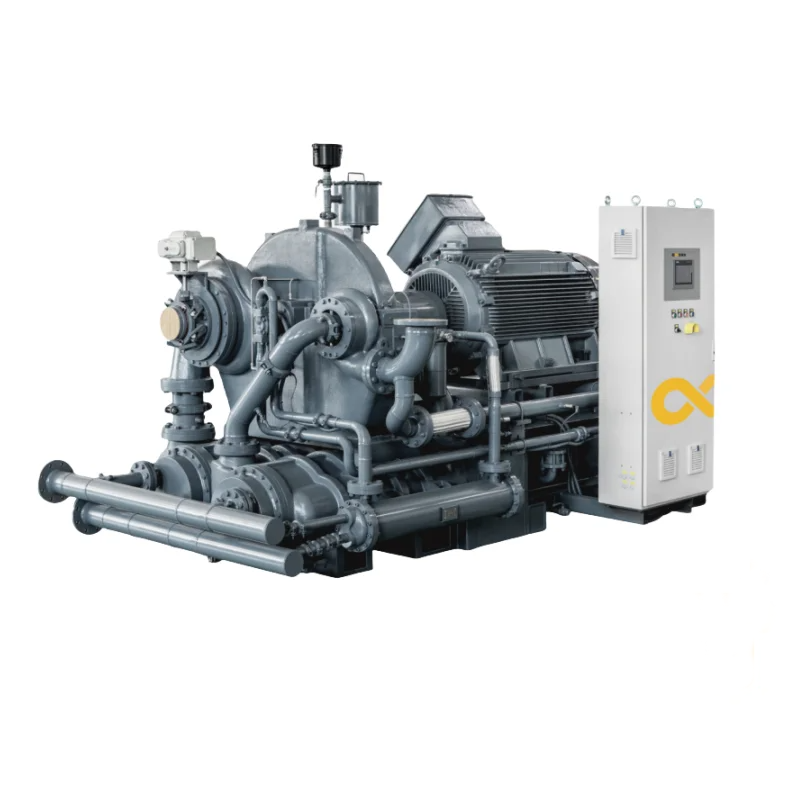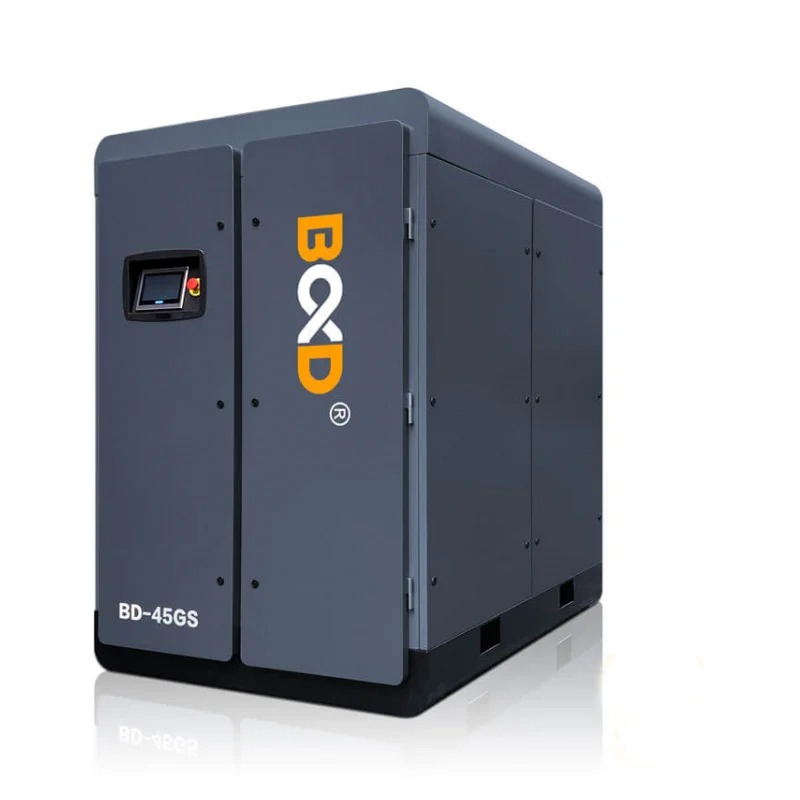Compresseurs d'air à vis are widely used in industrial applications due to their efficiency and reliability. However, understanding their air displacement and common issues is essential for ensuring optimal performance. In this article, we answer three frequently asked questions about screw compressor air delivery, including key influencing factors, troubleshooting tips, and post-maintenance concerns.
✅ Explore Baldor’s full range of energy-efficient screw air compressors.
1. What Factors Affect the Actual Air Displacement of a Screw Air Compressor?
While the theoretical displacement of a screw compressor depends on the rotor tooth volume, rotor count, and speed, the actual air output is often lower due to several operational factors:
Key Influences:
- Internal Leakage
Even though rotors in a screw compressor do not contact each other or the casing directly, small gaps lead to gas leakage. Leaks between rotors or from high-pressure zones back to the suction side reduce air output. Worn-out sealing lines, such as sealing teeth or grooves on the rotor tips and ends, can worsen this issue. - Inlet Air Conditions
As a positive displacement compressor, the intake volume remains fixed. However, high intake temperature or excessive intake resistance lowers air density, reducing the mass flow rate of discharged air. - Cooling Efficiency
Heat generated during compression can cause air expansion before intake is completed. Poor cooling performance—whether due to inefficient oil cooling or water cooling—raises internal temperatures and reduces overall intake volume. - Rotational Speed
Air displacement is directly proportional to rotor speed. A drop in motor speed—caused by low voltage or frequency fluctuations—can decrease air output accordingly.

2. What Are Common Screw Compressor Failures and How to Fix Them?
Compresseurs d'air à vis consist of a driving rotor, driven rotor, casing, and a synchronizing gear system. Over time, issues can occur, including:
Typical Malfunctions and Solutions:
- Bearing Failure
Causes: Contaminants in oil, low oil pressure, or degraded oil quality.
Solutions:- Inspect the oil supply system
- Clean oil filters and oil coolers
- Adjust the oil pressure valve
- Test oil quality and replace if needed
- Check and repair oil leakage points
- Rotor Damage
Causes: Entry of foreign particles, high intake air temperature, high compression ratio, improper assembly, or casing deformation.
Solutions:- Inspect the air intake system
- Clean the intercooler
- Ensure adequate cooling water flow
- Clean oil coolers and check oil spray nozzles
- Abnormal Noise or Vibration
Causes: Shaft misalignment or loose coupling.
Solutions:- Disassemble and inspect for shaft integrity
- Realign or replace faulty components
3. Why Does Air Output Decrease After Maintenance?
It’s common for a screw air compressor’s output to drop slightly after maintenance or overhaul. This isn’t necessarily a sign of poor service—in fact, the following reasons often explain this temporary reduction:
Possible Causes:
- Installation or Assembly Errors
Even minor misalignments during reassembly can impact performance. - Lack of Break-in Period
Similar to other machinery, screw compressors need a run-in period after maintenance. During this time, the air distribution system and piston components may not yet operate with full efficiency. Increased friction and internal leakage are common until proper fit is achieved.
Conclusion
Understanding how factors like leakage, cooling efficiency, and operating speed affect air displacement can help you maintain your screw air compressor’s performance. Regular maintenance is essential, but it’s equally important to allow time for the system to stabilize after repairs.
For more expert guidance and technical support, contact our team or visit our knowledge center.
📩 Looking for tailored energy-saving solutions? Contact Baldor today to optimize your compressed air system.
